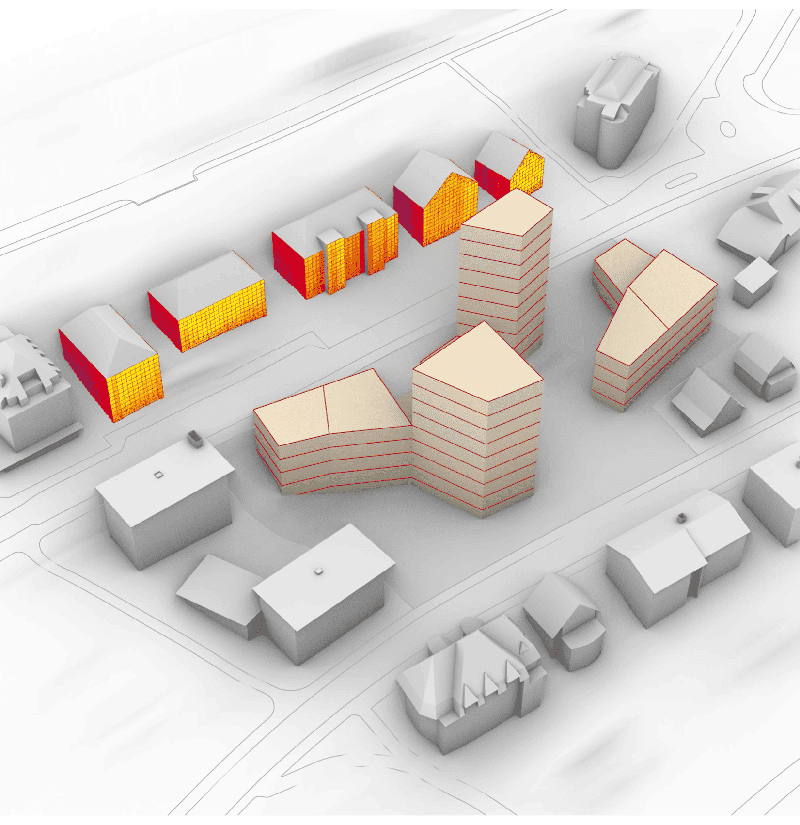
DeepCloud
A data-driven sub-grid parametrization for complex terrain

Abstract
There is considerable consensus that the main cause of the great uncertainties in future changes in precipitation is the need to parameterize sub-grid scale (SGS) processes in climate models (GCM). The key source of error in the recent generation of GCMs is believed to be the interaction between SGS processes and the large-scale atmospheric circulation that is due to its temporal and spatial scale explicitly resolved. While there is hope on the long run, because the projected increase in computer power will allow us to resolve many SGS processes in the upcoming decade, researchers are currently investigating how the representation of SGS processes can be improved using machine learning (ML) and there are still considerable challenges ahead:
- ML methods struggle to generalize and predict unphysical SGS tendencies in simulations of future climates;
- Coupled to the dynamical core of a GCM, trained ML methods experience stability problems;
- The performance of different ML methods over complex terrain is unclear;
- It is an open question whether a ML-based parameterization should replace all SGS parameterizations or leverage existing parameterizations.
In this project, we will explore physically-constrained ML-based SGS parameterizations to overcome the generalization problem and quantify their performances over complex topography. Further, we use backward optimization, saliency maps, feature importance and layerwise relevance propagation to understand how different ML methods learn to predict SGS tendencies over complex topography. This interpretation of the training enables new and exciting process understanding plus it will advance our understanding of how to design the next generation of ML-based SGS parameterizations.
People
Collaborators




description
Motivation
The project explores different data-driven approaches to replace one of the heaviest numerical solvers that is employed in weather modeling, which is radiation flux computation. The current state-of-the-art is to use the numerical solver, ecRad, at a coarser temporal and spatial resolution due to its computational costs. By incorporating our proposed deep learning model into the weather simulation model, stable simulations beyond two months with tendencies very similar to numerical solver are achieved.
Proposed Approach / Solution
We have developed data processing and deep learning methods to replace the currently used numerical solver, ecRad, for radiation flux computation based on simulated data generated by the weather model ICON. Upon success on offline experiments, the proposed methods are also coupled with the weather model to observe stability when using the proposed model instead of ecRad in online simulations. Going beyond a few days, stable weather simulations where temperature does not deviate more than 2 Kelvin across atmosphere layers for the full duration of simulations (we tested a horizon of two months) have been observed. We showcase similarity of proposed approach (RNN) to the numerical solver (ecRad) in Fig. 1.
Impact
By reducing the computational load of weather models using deep learning models, one can both increase the resolution of simulations and/or the horizon of simulations substantially. Our experiments show very good performance even at the top of the atmosphere, which has been typically avoided by the data science community due to challenges arising from very low density at low pressure atmosphere. Achieving predictive performance similar to the numerical solvers including at the top of the atmosphere is necessary for parameters needed to run weather models; i.e., when coupling ML-models with physical weather models.

Presentation
Gallery
Annexe
Additional resources
Bibliography
Publications
Related Pages
News
Latest news


First National Calls: 50 selected projects to start in 2025
First National Calls: 50 selected projects to start in 2025


AIXD | Generative AI toolbox for architects and engineers
AIXD | Generative AI toolbox for architects and engineers


Smartair | An active learning algorithm for real-time acquisition and regression of flow field data
Smartair | An active learning algorithm for real-time acquisition and regression of flow field data
Contact us
Let’s talk Data Science
Do you need our services or expertise?
Contact us for your next Data Science project!




